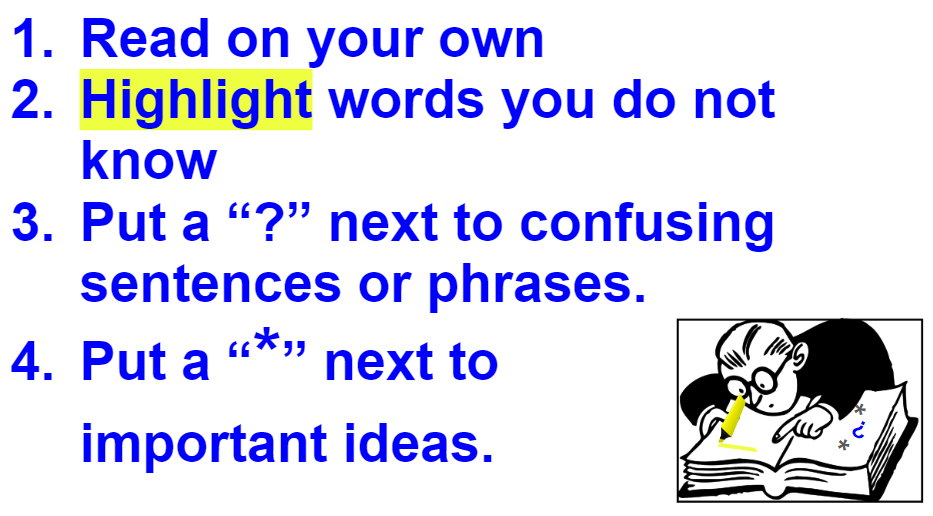Leveled Reading and Writing Activities for a Civics-Based Lesson Using AI

by Dr. Melinda Vander Ploeg Fallon
While participating in a VALRC professional learning community (PLC) titled “Teaching the Skills that Matter: Civics Education”, I undertook to adapt a problem-based learning (PBL) lesson for ABE to the various levels of Fairfax County Public Schools Adult and Community Education (FCPS-ACE) English as a Second Language (ESOL) program. The original lesson, “Raising Public Awareness”, was a great PBL lesson that lent itself to practicing all four skills (speaking, listening, reading, and writing) with English language learners; however, its level suited only the most advanced learners in our program. Making it workable for beginning through advanced levels required maintaining the lesson’s appealing content while adapting both materials and techniques. While developing the leveled lessons, a few considerations helped prioritize how to present the material. The basic practical considerations were how to make the core materials readable through adaptation as well as vocabulary and context support. The less tangible considerations were how to balance the adult learners’ wealth of world experience—a resource to be validated and utilized—with their varying levels of pre-existing knowledge and limited means for communicating what they know. The final leveled lessons successfully addressed these considerations in ways that were familiar to teachers in our program.
Adapting the core reading materials was easier than ever thanks to artificial intelligence (AI). The original lesson used an article titled “Setting the Public Agenda.” The leveled lessons added a second article about a construction project planned for a lot next to our school. Asking AI for a simplification of both texts to a particular K–12 grade level was a great timesaver when adapting the articles. The results just needed to be checked for accuracy against the original articles and to make sure the vocabulary was common and consistent. For the lowest reading levels, adding free-use images or photos provided visual support to readers. The images that follow show the adapted versions of one section of “Setting the Public Agenda”.
| Beginning & Low Intermediate | High-Intermediate | Advanced |
 |
 |
 |
Adjusting activities for pre-reading activation or post-reading comprehension provided learners with level-appropriate support for vocabulary and context. Question generating prompts, opinion-sharing activities, and discussions in the adapted lessons also brought opportunities for learners to share existing knowledge and experience. As an example, for the beginning levels, slides with questions about images related to the construction project encouraged learners to contribute vocabulary and information, while a “take sides” activity facilitated expressing an opinion on the project. For the advanced level, the title of the article about the project acted as the prompt for predictions about the article’s content. After reading, learners shared opinions in order to build lists of the project’s pros and cons. At all levels, exchanges among learners fostered the use of new vocabulary, activated thoughts, and raised questions about the readings.
The suggested reading techniques also varied according to level. When working on the article about the planned construction project, the lower levels received more decoding support while the advanced learners started out more independently. These differences can be seen in the following slides.
| Beginning & Low Intermediate | High-Intermediate | Advanced |
 |
 |
 |
For all levels, the other text, “Setting the Public Agenda,” was structured as a jigsaw reading with comprehension questions. The entire class read the introduction together, then the teacher formed groups and distributed a “notes” page. Beginning learners answered questions like “Is this good for one person or many people?” The advanced learners had more complex questions like “What are the benefits or upsides of using this method to set the public agenda?”. After reading and answering questions together, learners regrouped to share what they had learned. Each learner’s contribution to the new group displayed their reading comprehension.
The leveled writing activities for these lessons prioritized group production to reduce the anxiety adult English learners often feel about writing. More structured support characterized the lower levels where the teacher and learners collaborated on an example before the learners adapted it. At the upper levels, learners worked in groups to create a letter, petition, or poster to present in front of the other learners. An extension of the lesson at the upper levels involved generating written materials to put a learner-selected issue on the public agenda. This led to independent writing that could be based on the early models generated by the groups.
While the leveled adjustments of the “Raising Public Awareness” lesson required tailoring materials and support, many of the teaching techniques were similar. The pre-reading questions and discussion activities as well as the group writing activities provided opportunities for learners at every level to bring existing knowledge and experience into the classroom. While the complexity of the reading and writing differed, learners at all levels grasped the core ideas and gained experience in the targeted types of writing.
 Melinda K. Vander Ploeg Fallon (M.A., Ph.D.) is a lead teacher in the Fairfax County Public Schools Adult and Community Education (FCPS-ACE) English as a Second Language (ESOL) program. She also teaches pronunciation for the same program. Melinda began her teaching career as an art history professor at George Mason University but later discovered that her true vocation was teaching ESOL.
Melinda K. Vander Ploeg Fallon (M.A., Ph.D.) is a lead teacher in the Fairfax County Public Schools Adult and Community Education (FCPS-ACE) English as a Second Language (ESOL) program. She also teaches pronunciation for the same program. Melinda began her teaching career as an art history professor at George Mason University but later discovered that her true vocation was teaching ESOL.